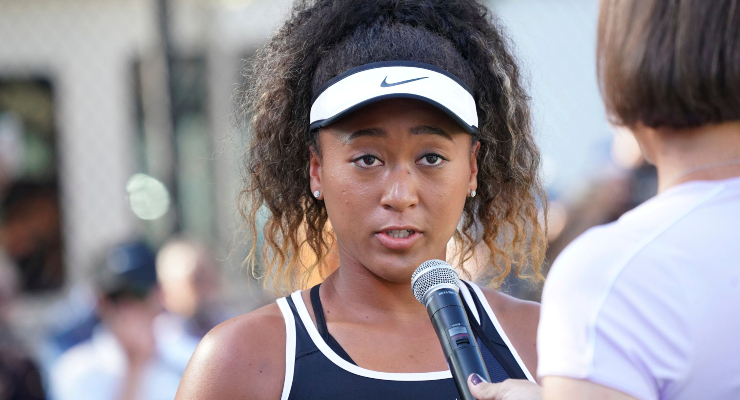
The world’s media find themselves behind the baseline, aced by star tennis player Naomi Osaka in her refusal to front the media at the French Open for the sake of her mental health.
“I am not a natural public speaker,” she wrote to her social media audience, “and get huge waves of anxiety before I speak to the world’s media. I get really nervous and find it stressful to always try to engage and give you the best answers I can.”
The power of her strike against the traditional questioning demonstrates a truth about journalistic practice: it’s long past time to call time on the performance act that the modern press conference has become.
As on the court, Osaka’s comments dipped, spun and turned just beyond the reach of the media’s outstretched metaphorical microphone. She’s forcing the press corps, whose days are often filled with press conferences, to ask: “Wait. Why do we do this again?”
After decades of increasingly sophisticated media training, with questions and answers gamed out in advance, it’s now home court advantage for the sportsperson.
“What to do” has been reverberating around the Australian media as the Victorian government, in lockdown once again, has seized the press conference stage to speak over the media’s head, directly to its audience. Journalists? They’re just part of the show — a little bit chorus, a little bit moustache-twirling villain. (I wrote about this in Crikey last time around.)
Grating and unfair
Broadcast live and unfiltered, the necessary journalistic practice in a press conference comes across as grating and unfair, while the hunt for the gotcha moment just seems ugly.
The usual answer to the why-do-we-do-this question is a bit about “access” and a bit about “accountability”. They’re words that have popped up into the huffing about Osaka’s decision and the nearly year-long angst over Melbourne’s Andrews/Merlino conferences.
Here’s the dirty secret: press conferences have rarely been about accountability — and have acted as a poor substitute for real access. In politics, they’re a press release with moving pictures. In sport and entertainment, they’re analogue Instagram — the funnel through which spectators and fans get to see the star close up.
In both cases, they’re about television images, not news. The decision by governments (and sporting bodies) to refine them into performative broadcasts is the logical step trading on 24-hour broadcast channels.
Back last century, when all news was mediated through newspapers, then radio and television, the job of the media was to be the daily record, to report “all the news that’s fit to print” (as The New York Times tagline had it) or (as the more pompous had it) to be “the journal of record”. Back then press conferences were a valuable tool for ensuring all the relevant reporters had access to all the relevant news.
Now that the job of journalism is to provide context and nuance, they’re an anachronism. Decisions are out on social media, where Prime Minister Scott Morrison can natter about his day-to-day activities to his 557,000 followers on Twitter or the 656,000 who like his Facebook feed. Meanwhile, Osaka is shaping the “real” her through the images delivered to her 2.6 million followers on Instagram.
Still, journalists are eager to hold on to the press conference format — to find some way to make them work for accountability — because it’s often all that’s left, and structured access is better than no access at all.
Yet in politics journalists spend most of their time trying to hack them. At the state level, the News Corp tabloids make it a matter of the government doing business that announcements be dropped to them as exclusives before being shared with the rest of the media.
In Canberra, the Morrison government will usually brief the senior gallery players the day before a structured announcement to position the story in the media the morning before a public release or press conference.
Exceptions still prove the rule: unprepared or emotional politicians can still stumble in front of the media, discovering that spin works best when well workshopped (as Christian Porter found this week).
Back in Paris, journalists are doing what they seem to like most: asking players what they think about the media. Tennis authorities have fined Osaka for refusing her “media obligations”, after which she pulled out of the tournament. Meanwhile, on Osaka’s social media, it’s all hearts and likes.
Do you think press conferences have had their day? And do you think sports stars have a duty to front them? Send your thoughts to letters@crikey.com.au, and don’t forget to include your full name if you’d like to be considered for publication.








Crikey is committed to hosting lively discussions. Help us keep the conversation useful, interesting and welcoming. We aim to publish comments quickly in the interest of promoting robust conversation, but we’re a small team and we deploy filters to protect against legal risk. Occasionally your comment may be held up while we review, but we’re working as fast as we can to keep the conversation rolling.
The Crikey comment section is members-only content. Please subscribe to leave a comment.
The Crikey comment section is members-only content. Please login to leave a comment.